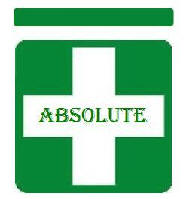Recall... News from
Work-Place Safety & Health Council

7 Dec 2010, Ref: 1011079

WSH Alert – Worker Caught In Between Machinery Parts of a Loader
A worker was fatally injured while performing functional checks on the
hydraulics of a skid-steer loader. During the checking process, the hydraulic
lift arm suddenly lowered. The worker’s head was caught between the lift arm
and the loader’s body. He died on the spot.
Figure 1. Worker caught between lift arm and body of skid-steer loader
Recommendations*
1. Adhere to Safe Maintenance Procedures: Before attempting
any repairs or functional checks on a machine, the person involved should
ensure that the machine’s ignition is off, the engine is completely shut down,
and the ignition key removed. In addition, the operator should lower the lift
arms and bucket and engage the parking brakes before getting off the cabin
seat. There should be measures in place to prevent unintended or inadvertent
activation of the machine.
2. Deploy Safety Devices: One should avoid performing
maintenance or service under a raised lift arm unless a manufacturer-approved
lift arm support has been properly deployed. In the event that the worker
needs to conduct functional checks to the machine (i.e. working underneath the
lift arm), ensure that the lift arm support devices, control interlock and
physical safeguards on the machine are not bypassed, modified or removed.
3. Conduct risk assessment: Prior to the start of work,
conduct proper risk assessment to adequately identify all potential hazards
and the risks involved. Appropriate control measures and safe work procedures
must be established, implemented and communicated to all involved personnel to
mitigate the risks. Potential hazards for this incident include:
- Being caught or crushed by moving parts
- Failure of bucket-lift arm assembly (i.e. accidental lowering of lift
arm)
- Failure of the hydraulic systems (e.g. hydraulic oil leaks)
- Unintended movements of the loader (if loader not properly parked or
braked)
4. Establish Safe Work Procedures: There should be a set of
established safe work procedures (SWP) that cover the operation, repair and
maintenance of machines. It should also include handling emergency situations
or non-routine events, such as the need for human-machine interface contact.
Persons involved in the work should be adequately trained and familiar with
the SWP such that the work can be carried out safely.
Further Information
1. Workplace Safety and Health Act, please click
HERE.
2. Workplace Safety and Health (General Provisions) Regulations, please click
HERE.
3. Workplace Safety and Health (Risk Management) Regulations, please click
HERE.
4. Technical Advisory for Safe Use of Machinery, please click
HERE.
5. SS 537: Part 1: 2008 on Code of Practice for Safe Use of Machinery
* Please note that the information provided is intended to enhance workplace
safety and health so that a similar recurrence may be prevented, and is not
exhaustive. The information provided should not be construed as implying any
liability to any party nor should it be taken to encapsulate all the
responsibilities and obligations of the reader of WSH Alert under the law.

 Absolute Safety and engineering
Absolute Safety and engineering Absolute Safety and engineering
Absolute Safety and engineering
![]()
